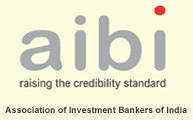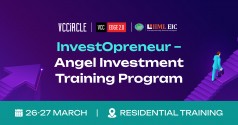Overview
There are three basic questions that corporate finance tries to answer - Where and how should a business invest its resources? How should a business raise funds to finance its investments? How much should a business return to its owners and how much should it reinvest? In this two-day seminar, we look at the tools and techniques that have been developed in theory to answer these questions, and how best to apply them in practice. In addition, we look at the big picture of corporate finance, the interrelationship between corporate financial decisions and how these decisions affect the value of a business.
The course is designed for participants with a wide range of backgrounds, from those with little exposure to corporate finance to those with several years of experience and it is also structured for both those who work at businesses (in corporate finance or general management) and for those who just value these businesses (portfolio managers, analysts).
The class will start with a discussion of the different interests that make up the modern corporation – managers, stockholders, lenders, analysts and society – and their different objectives. The potential for conflict is large and many problems can be traced to this conflict. We follow up with the first of the big questions in corporate finance. What is risk and how do we convert a risk measure into a hurdle rate? In the process we look at different models of risk and return and how they can be used to assess hurdle rates in different currencies, countries and companies. We also examine the cost of debt and the resulting cost of capital for a firm.
In the second part of the session, we turn our attention to investment analysis. In particular, we consider what a project is and how to estimate cashflows for projects. We will draw a distinction between accounting earnings and cashflows and examine different decision rules that can be used to determine whether an investment passes muster.
In the third part of the session, we evaluate the financing choices made by a firm in terms of both how much it chooses to borrow and what type of financing it uses. We look at different approaches to coming up with the optimal debt ratio for a firm and map out ways of getting from a firm’s current debt ratio to its optimal.
In the fourth part of the session, we examine how much firms pay in dividends and whether they should pay more or less. In the process, we also look at when it makes sense to buy back stock rather than pay dividends. We close the class by tying corporate finance decisions to value.
In the final part of the session, we will bring all of these components together in a value assessment, which we will tie to corporate decisions. Thus, we will explore the determinants of intrinsic value in a company and what managers can do to enhance value.
Process
This is not a theory or an academic class but an applied, big-picture class. As we introduce concepts, models and measures and apply them to real companies: Disney, Baidu and Tata Motors. Thus, we will estimate the cost of equity and capital for the companies, evaluate what the right mix of debt and equity is at these companies and determine whether their policies on returning (or not returning) cash to stockholders makes sense. We will close the process by valuing both companies.
While the session will be delivered lecture-style, it is an open session where participants are encouraged to actively involve them, not only by asking specific questions that they need answers to but also by bringing in their experiences and companies into the discussion. If participants have laptop computers, they can bring them, as well as the financial statements of any company that they are interested in analyzing.
Agenda
Day 1
| Session Time | Course Material |
| 09.00 AM - 10.45 AM |
The Objective in Corporate Finance |
| 11.00 AM - 12.30 PM |
Risk free rates & Currencies |
| 01.30 PM - 03.30 PM |
From beta to cost of equity |
| 03.45 PM - 05.30 PM |
Measuring returns |
Day 2
| Session Time | Course Material |
| 09.00 AM - 10.45 AM |
The rest of investment analysis |
| 11.00 AM - 12.30 PM |
More on optimizing debt |
| 01.30 PM - 03.30 PM |
Dividend policy |
| 03.45 PM - 05.30 PM |
Value Enhancement |
Venue :
Mumbai
Vivanta by Taj – President
90, GD Somani Road, Cuffe Parade
Mumbai -400005
Do you have any queries?
Drop us a line and we will call you.






